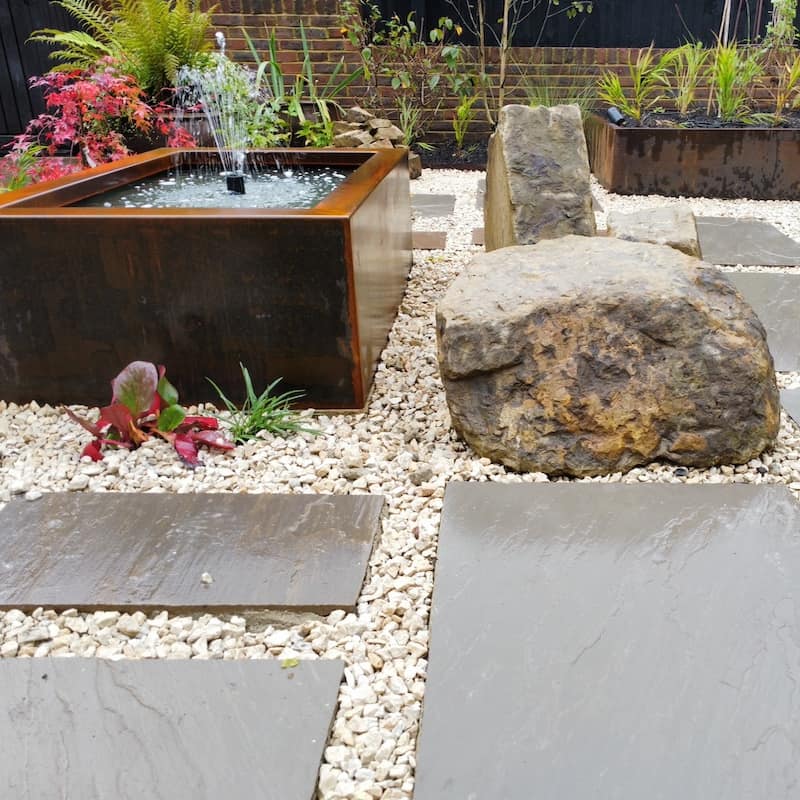
Landscape Hardscaping
What exactly is Landscape Hardscaping?
What exactly is Landscape Hardscaping?
Landscape hardscaping is a significant part of a landscape design project and usually refers to the construction of permanent, non-living features in a landscape, such as:
- Retaining walls;
- Patios;
- Walkways;
- Driveways.
What materials are use in Hardscaping?
These features can be made of a variety of materials, including concrete, stone, brick, or pavers. Hardscaping is an important component of landscape design as it can define and shape outdoor spaces, add structure and form, and create functional areas for outdoor activities.
Why use Hardscaping in a Landscaping Project?
Hardscaping can also add aesthetic appeal to a landscape by incorporating textures, patterns, and colors that complement the surrounding environment. In addition, hardscaping can be used to solve practical problems, such as erosion control, water management, and lighting, as well as to create functional areas for outdoor activities, such as grilling, dining, and entertaining.
Overall, landscape hardscaping is an important aspect of creating functional and attractive outdoor spaces, and it can play a critical role in the overall success of a landscape design project.
What types of Hardscaping are available?
Often landscape hardscaping is broken down into the specific areas and/or phases of the project. For example:
Site Assessment: This involves conducting an initial assessment of the site to determine its current condition, identify areas for improvement, and formulate a plan for the hardscaping project.
Design: This involves creating a comprehensive design for the hardscaping project, taking into account the site assessment, the client’s goals and preferences, and local regulations and zoning requirements.
Patios: This involves installing patios, using materials such as pavers, natural stone, and concrete, to create functional and attractive outdoor living spaces.
Walkways: This involves installing walkways, using materials such as pavers, natural stone, and concrete, to provide functional and attractive pathways through the landscape.
Retaining Walls: This involves installing retaining walls, using materials like natural stone, concrete, and wood, to create functional and attractive retaining structures for the landscape.
Fire Pits: This involves installing fire pits, using materials such as natural stone, concrete, and metal, to provide functional and attractive outdoor gathering spaces.
Water Features: This involves installing water features, such as fountains, pools, and streams, to add visual interest and soothing sounds to the landscape.
Outdoor Kitchens: This involves installing outdoor kitchens, using materials such as stainless steel, stone, and wood, to provide functional and attractive cooking and dining spaces. walkways, patios, and other hardscaping elements to ensure they are safe and attractive.
Landscape Lighting: This involves installing landscape lighting, such as pathway lights, spotlights, and accent lights, to enhance the beauty and safety of the hardscaping elements at night.
Maintenance: This involves providing ongoing maintenance services, such as cleaning, sealing, and repairs, to ensure the continued beauty and longevity of the hardscaping elements. Landscape hardscaping services may also offer other services, such as landscape design and installation, to provide a comprehensive solution for enhancing the beauty and functionality of the landscape.